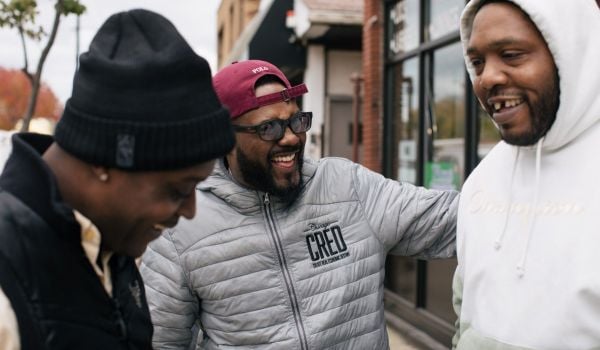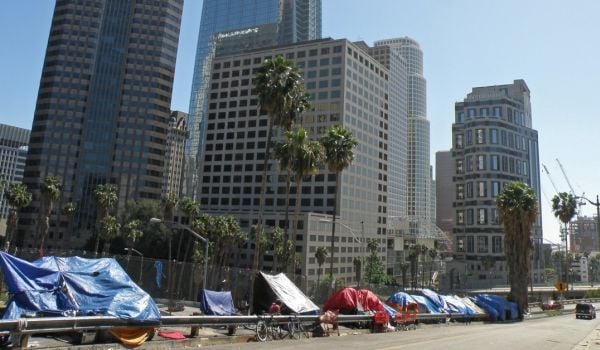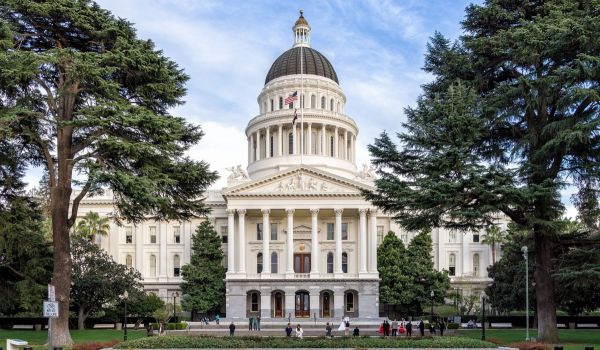This article is being co-published with The Imprint, a national nonprofit news outlet covering child welfare and youth justice.
Five years ago, Paris Davis returned triumphant to his hometown of Oakland, California. He had earned his bachelor’s degree in 2017 from Humboldt State University, and had just signed a contract to play basketball in Australia. It was a promising career that would enable him to raise his daughter, then a toddler.
But on May 27, 2017, he was shot and critically wounded in a robbery.
“It derailed my basketball career,” Davis said. “I felt hopeless.”
A couple weeks after the shooting, a stranger came to his home. It was JD Rhone, an intervention specialist with the nonprofit Youth ALIVE!. The East Bay community group focuses on the aftermath of gun violence, connecting victims with the resources they need — as quickly as possible.
A bill signed into law signed by Gov. Gavin Newsom in August makes “violence preventive services” like these a benefit under Medi-Cal, the state’s public health system that covers approximately one-third of the California population.
No mere bureaucratic move, the designation ensures that professionals doing frontline violence prevention work have access to consistent and reliable funding, not just the piecemeal grants, philanthropic donations and other one-time financial sources they’ve long relied on.
The California law, Assembly Bill 1929, is one of a growing number of policies nationwide that make funding for these programs more sustainable, following a 2021 directive from the Biden-Harris administration that provides for Medicaid reimbursements in states that utilize the approach. Laws similar to California’s have been enacted in Connecticut, Illinois, Oregon and Maryland. A similar bill is pending in a New York Senate committee.
Passage of such laws acknowledges the importance of violence prevention as a fundamental public health necessity, supporters say.
“We’ve been working on this transformation of how we view community violence for a long time,” said Dr. Kyle Fischer, an emergency physician at the University of Maryland Medical Center, and the policy director for the national Health Alliance for Violence Intervention. “In popular culture and in politics, people understand that community violence is a public health issue — but the policy is catching up.”
Putting the pieces together
Back at home healing after he was shot, Davis was initially resistant to the help offered by the Oakland outreach worker. But Rhone kept showing up at his house — taking him out to lunch to talk, sharing experiences and stories that he could relate to, and talking about future possibilities for his life.
Rhone was “helping me put the pieces together,” Davis, now 29, explained in an interview.
Unable to pursue his athletic career, Davis chose to join Rhone in his work. He went back to school and obtained a master’s degree in public administration with a concentration in health care from California State University, East Bay, and in 2019 joined Youth ALIVE! as a staff member, working to support the families of homicide victims. He now works as the group’s intervention director.
Patients are referred to the community agency by hospital staff after they’ve been admitted for treatment of gunshot or stab wounds. Davis dispatches “intervention specialists,” to meet them at the hospital, learning what kinds of support they will need as they recover. Sometimes, the help is applying for financial compensation, or finding safe housing. For others, it’s simply getting groceries and a ride to medical appointments. Patients typically also need access to therapy or counseling.
This model of a hospital-based violence intervention program was pioneered by Youth ALIVE! in the early 1990s to help victims rebuild their lives after a traumatic injury, and to prevent retaliation or further violence.
The nonprofit now provides an array of services including a team that mediates community conflicts before there is retaliation or violent incidents.
In Oakland — where, like across the U.S., gun violence has disproportionately impacted Black men — the work is urgent. Victims of interpersonal violence are at a higher risk for being injured again or perpetuating violence, according to the Health Alliance for Violence Intervention. But proactively providing trauma-informed care to people who have been shot or stabbed can help reduce cycles of violence, according to a study conducted by researchers at University of California, San Francisco.
The researchers tracked the outcomes of 466 people who were enrolled in a violence intervention program over the course of 10 years, and found the involvement cut in half the rate of reinjury.
Davis described why he thinks the approach is effective. “The law enforcement has lost trust with the community, so having a familiar face from the community — it makes you feel more comfortable — and it’s not coming from a judgmental place,” he said. “It’s, ‘How can we comfort you in this time right here? How can we help you right now?’”
The outreach workers have credibility, he added. “Someone comes to your bedside who looks like you, can identify and talk about areas or key players in the community, saying, ‘We understand it, we come from this community too.’”
Interrupting cycles of violence
Hospital-based violence intervention programs have been growing across the country since their creation in Oakland decades ago.
In Oakland, the work began with a 1988 volley of bullets that left a man named Sherman Spears in a wheelchair, having lost the use of his legs. In a 1998 interview with the Colorlines publication, he recalled his early mindset, and how it changed when he took up advocacy work. Six years after the shooting that left him unable to walk, Spears helped launched a group still run by Youth ALIVE! called Caught in the Crossfire.
“When I woke up in the recovery room, no one was there for me to tell me that I was scared, or that the bullet hurt, or that I didn’t know how to live now that I was in a wheelchair,” he said. “The only message I got from my friends and family was, ‘Let’s go and get the person that shot you.’”
Youth ALIVE! has since honed Caught in the Crossfire, tailoring the approach to each individual served. The organization works with Highland Hospital, which is responsible for roughly 95% of referrals. With the patient’s consent, staff at the public hospital enter information on each participant into a shared database, and outreach workers receive a notification for each new referral. They aim to meet the patient at their hospital bedside within the hour.
John Torres, deputy director of Youth ALIVE!, said there is a term used often by violence prevention specialists: the “golden hour.” This is the time period after a violent injury, such as a shooting, where a victim might be reflective and vulnerable in the hospital, and willing to accept help or make changes in their lives to prevent further violence. Violence prevention professionals are careful not to judge or assign blame to victims for their injury, Torres emphasized.
Versions of this method are now applied across the country, with support from the Health Alliance for Violence Intervention. The alliance provides training, certification and other resources for 50 local programs nationwide.
But funding has long been a scramble, so the consistent Medicaid dollars now available in California and elsewhere are significant. Stable funds are crucial to hiring and retaining the frontline staff who make the work possible, making funding bills like AB 1929 all the more important, said Kyndra Simmons, a former trainer for Youth ALIVE! who now works with similar programs nationally as the HAVI’s director of frontline training.
“If they don’t have that support,” she said, “this work cannot continue to grow.”
It can be hard to track the real impact of violence intervention programs, director Davis said. How do you measure what hasn’t happened as a result of intervention? But he points to his own experience as an example of how this effort can create impactful change.
“In our community, where pain is so deeply rooted, so constantly fed by violence and racism, sometimes healing means transcending suffering and putting purpose to your pain,” he wrote in the organization’s annual report. “Yes, violence leads to more violence. But healing is possible, and healing breeds more healing.”
Annie Sciacca is a freelance reporter for The Imprint based in Oakland, California. She can be reached at asciacca@imprintnews.org.
















